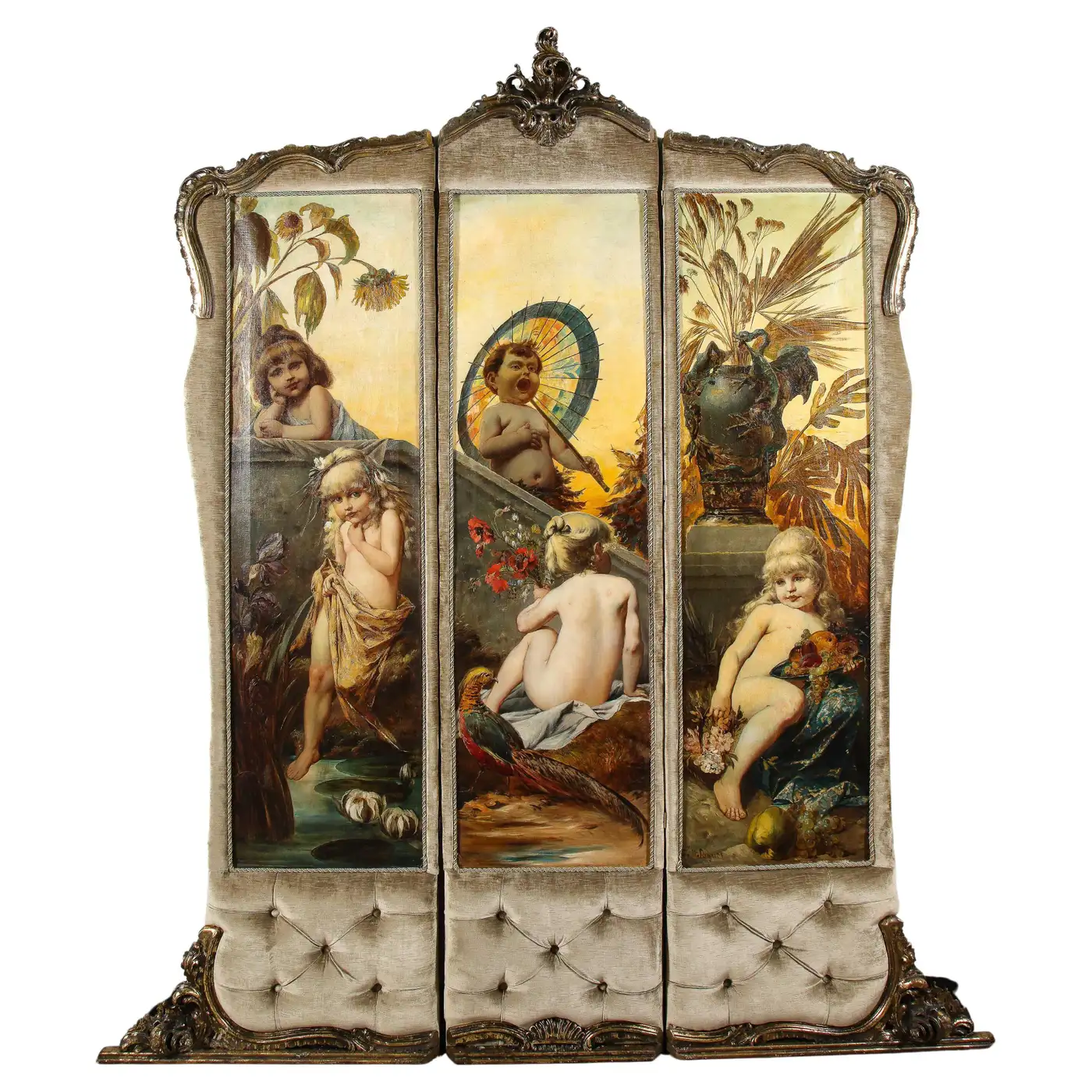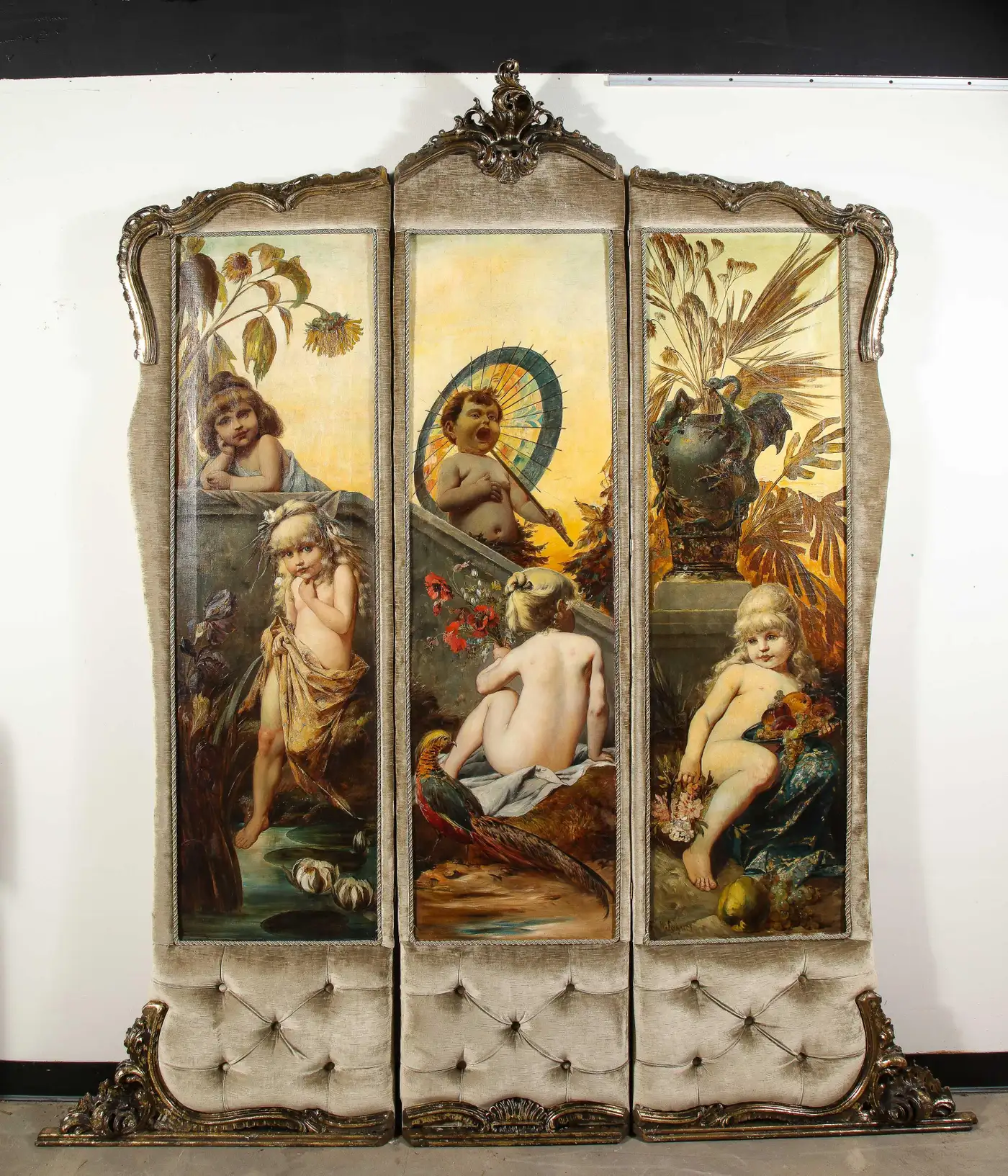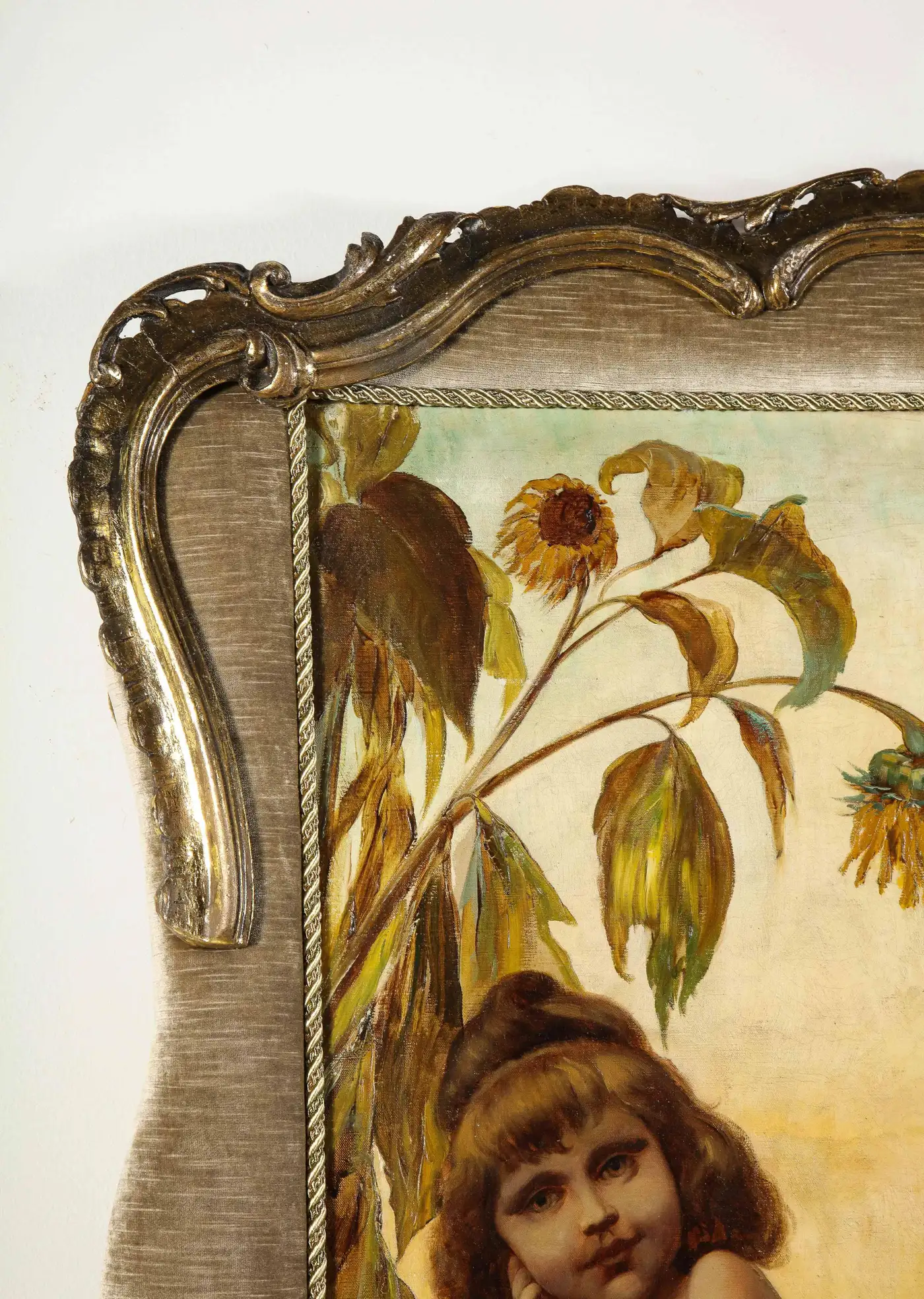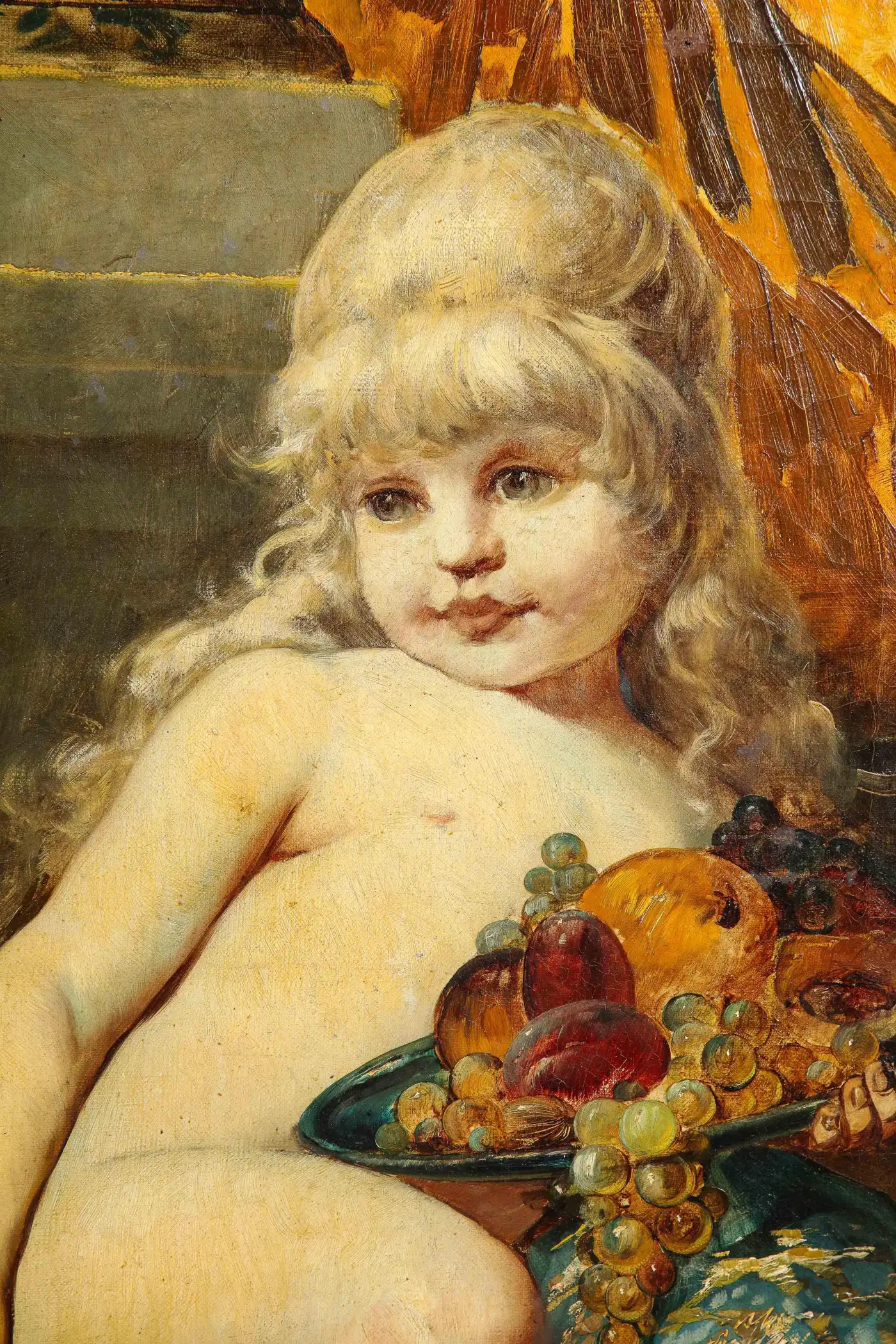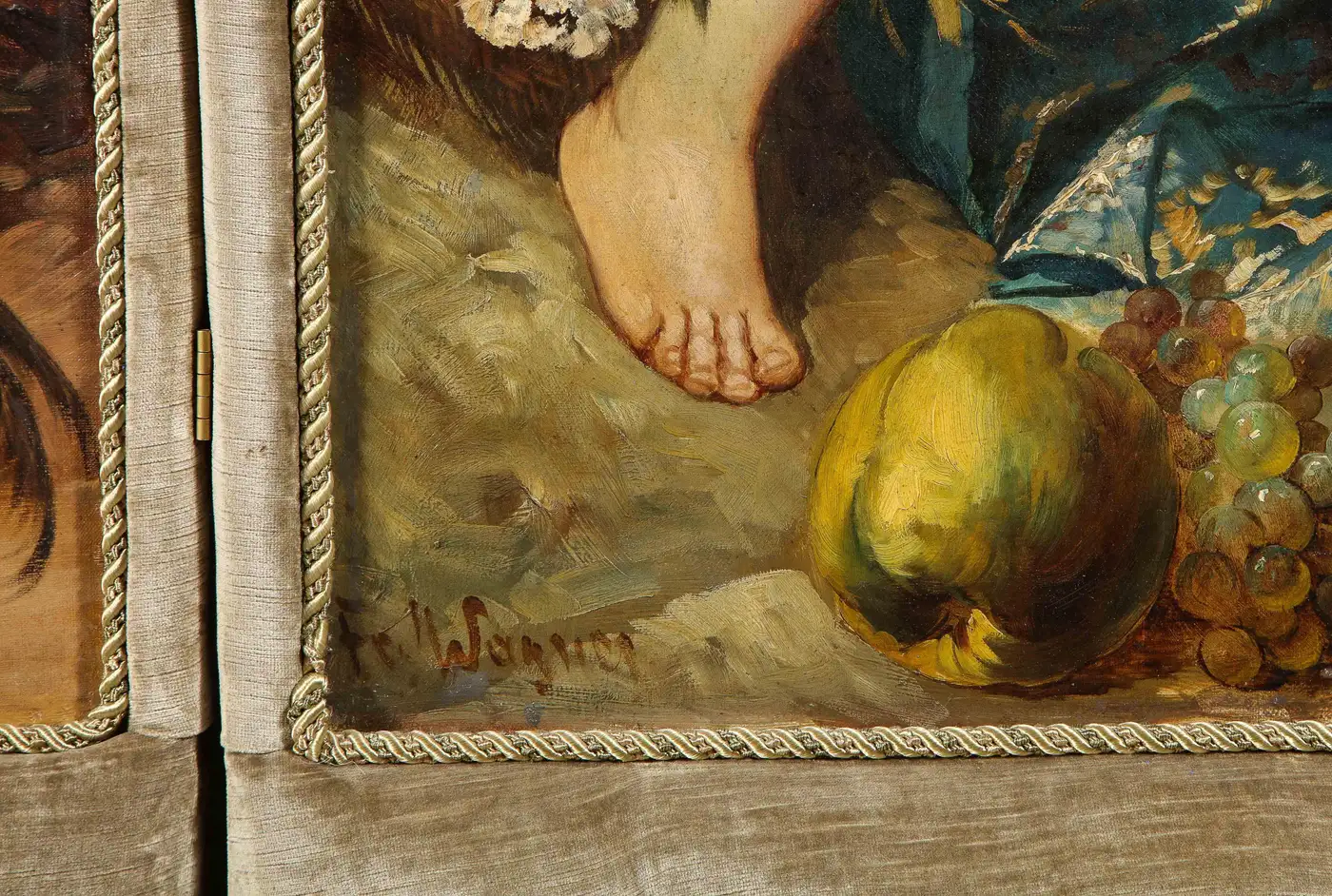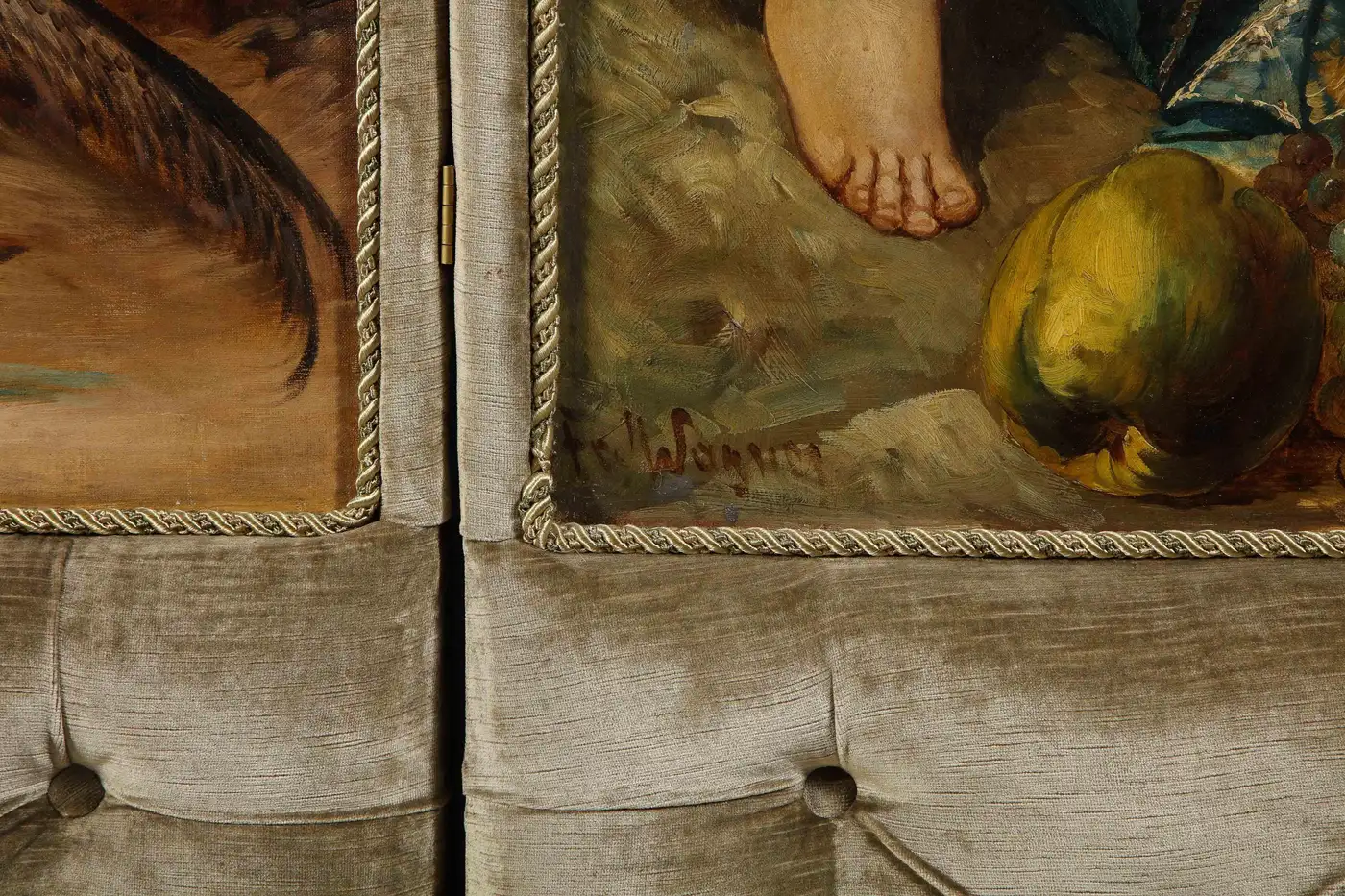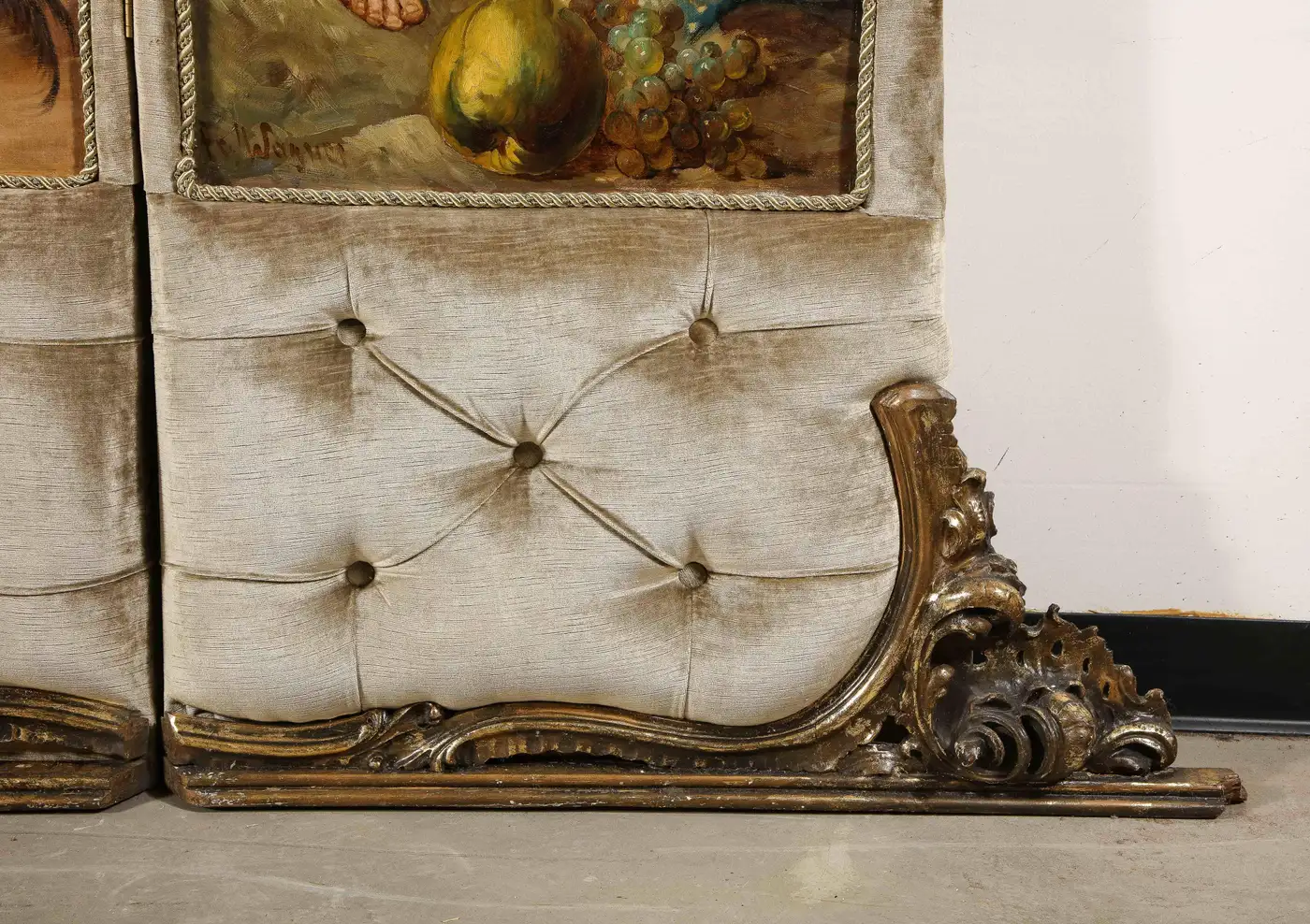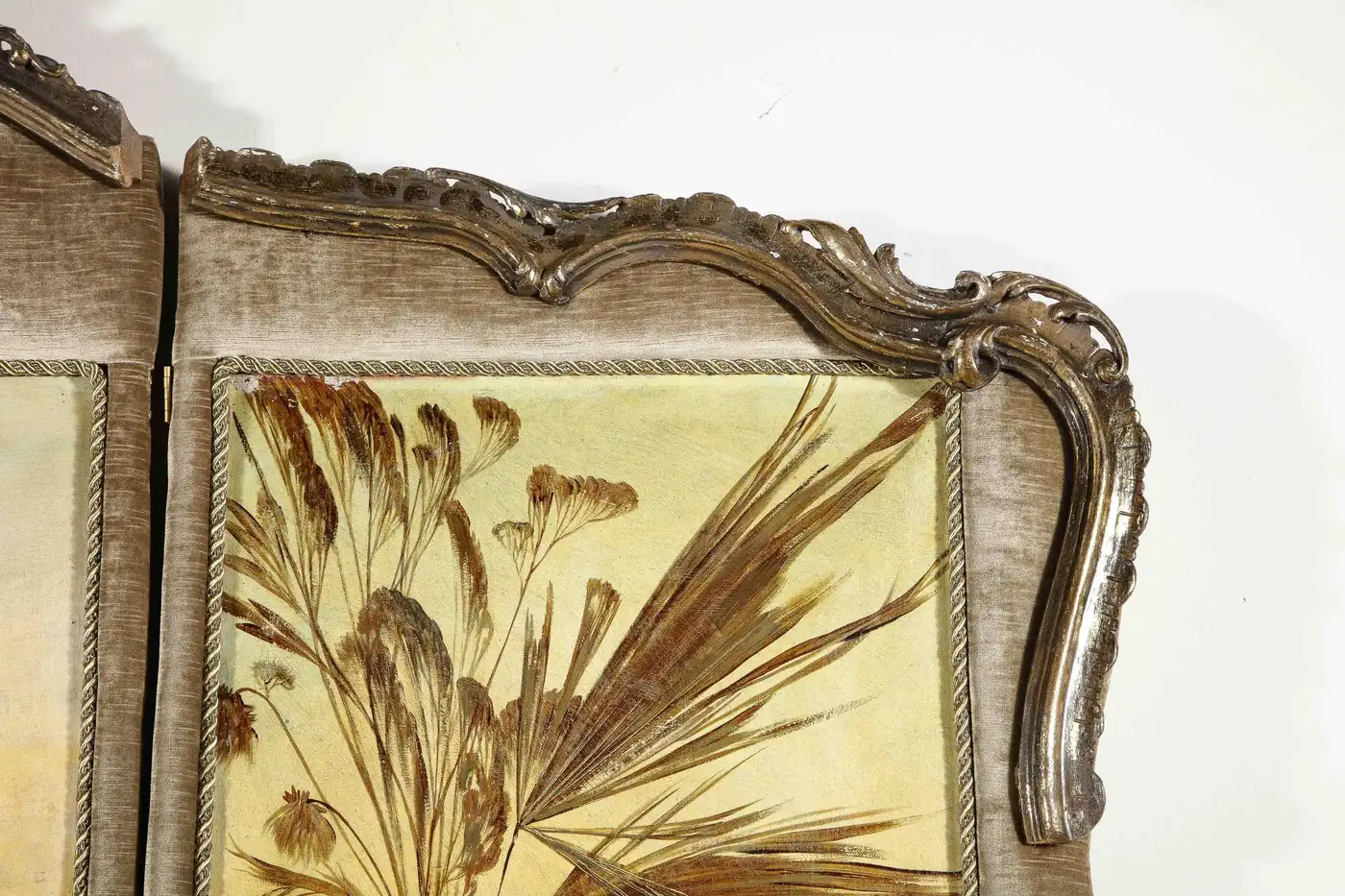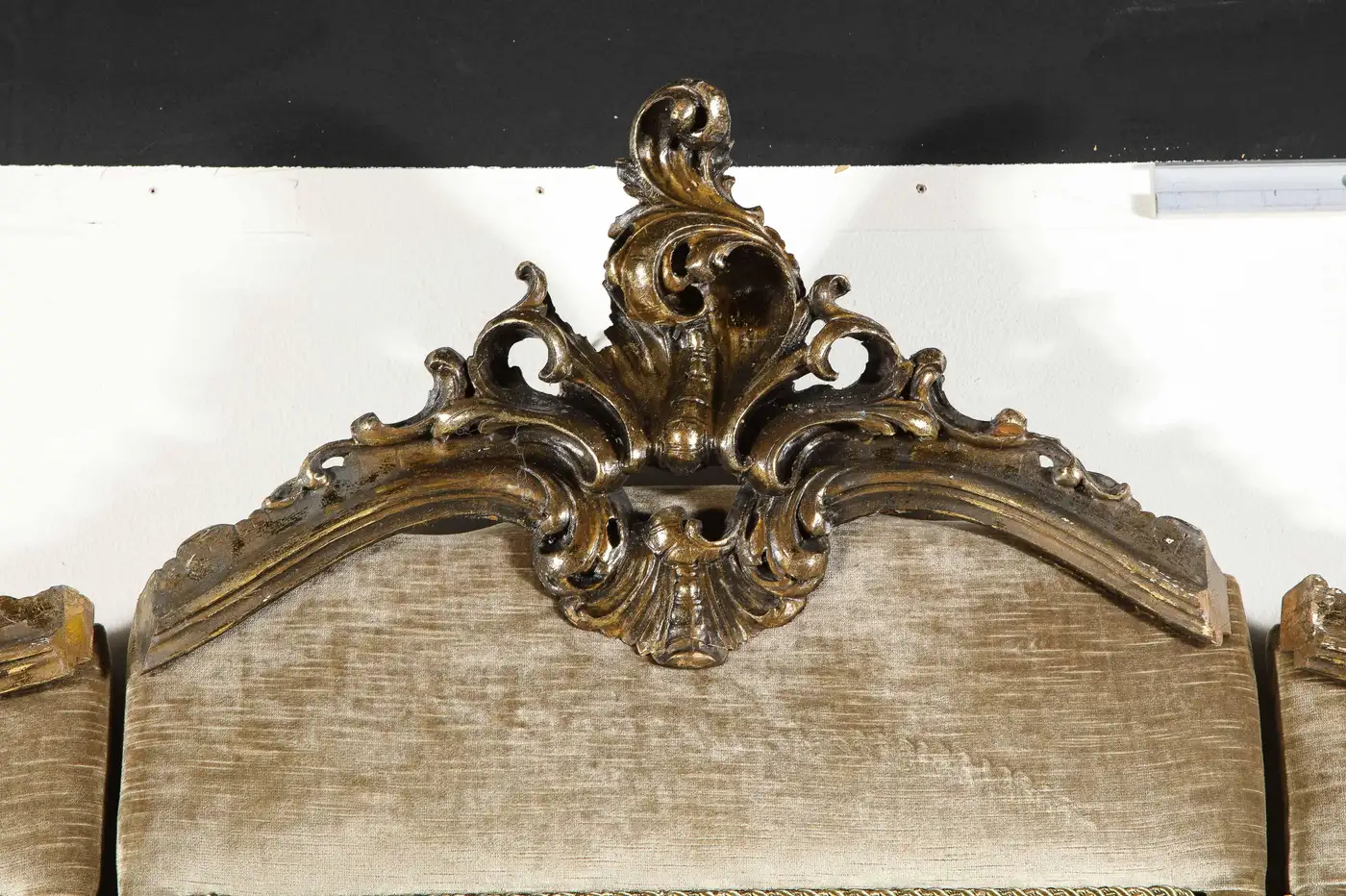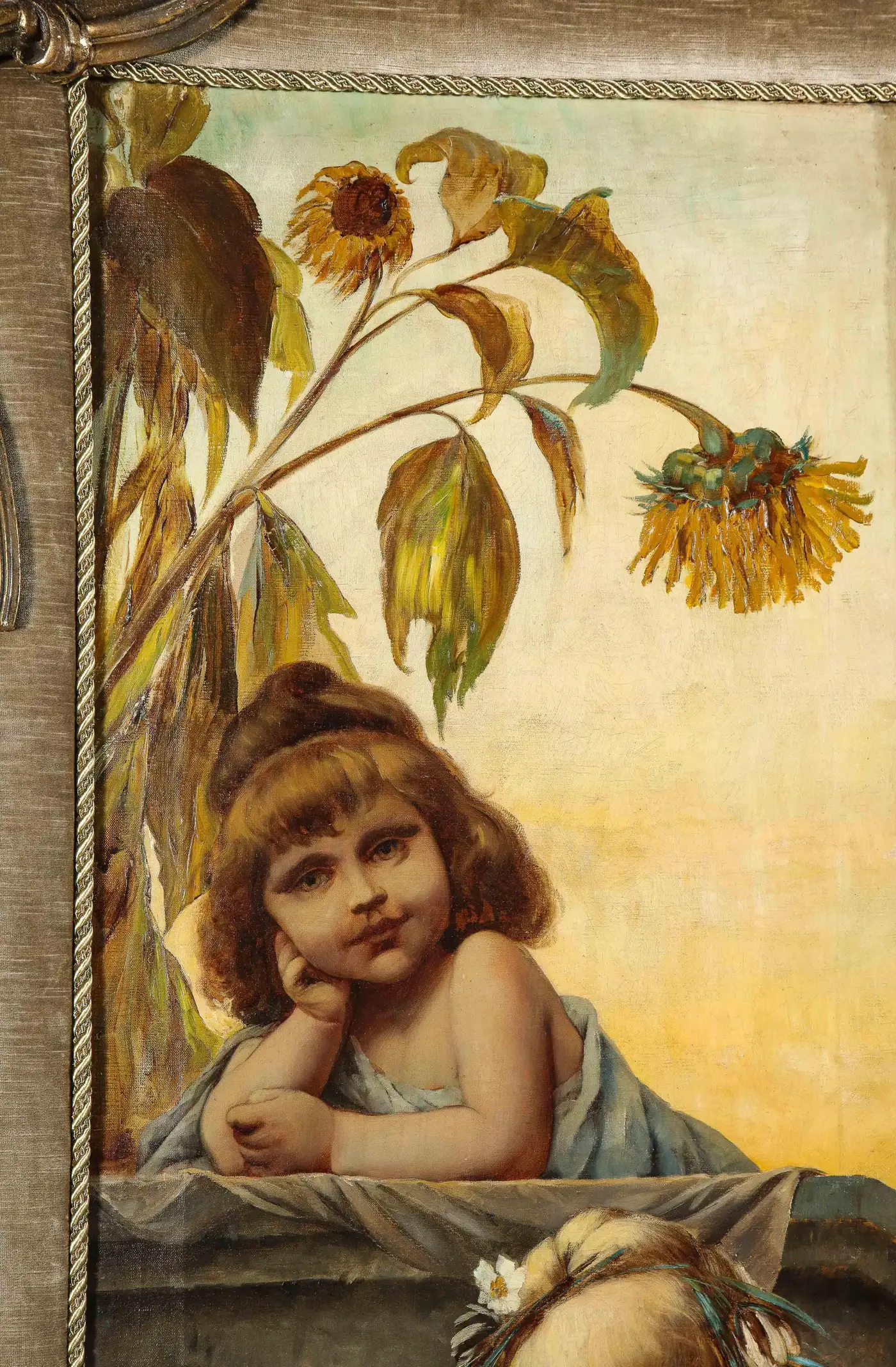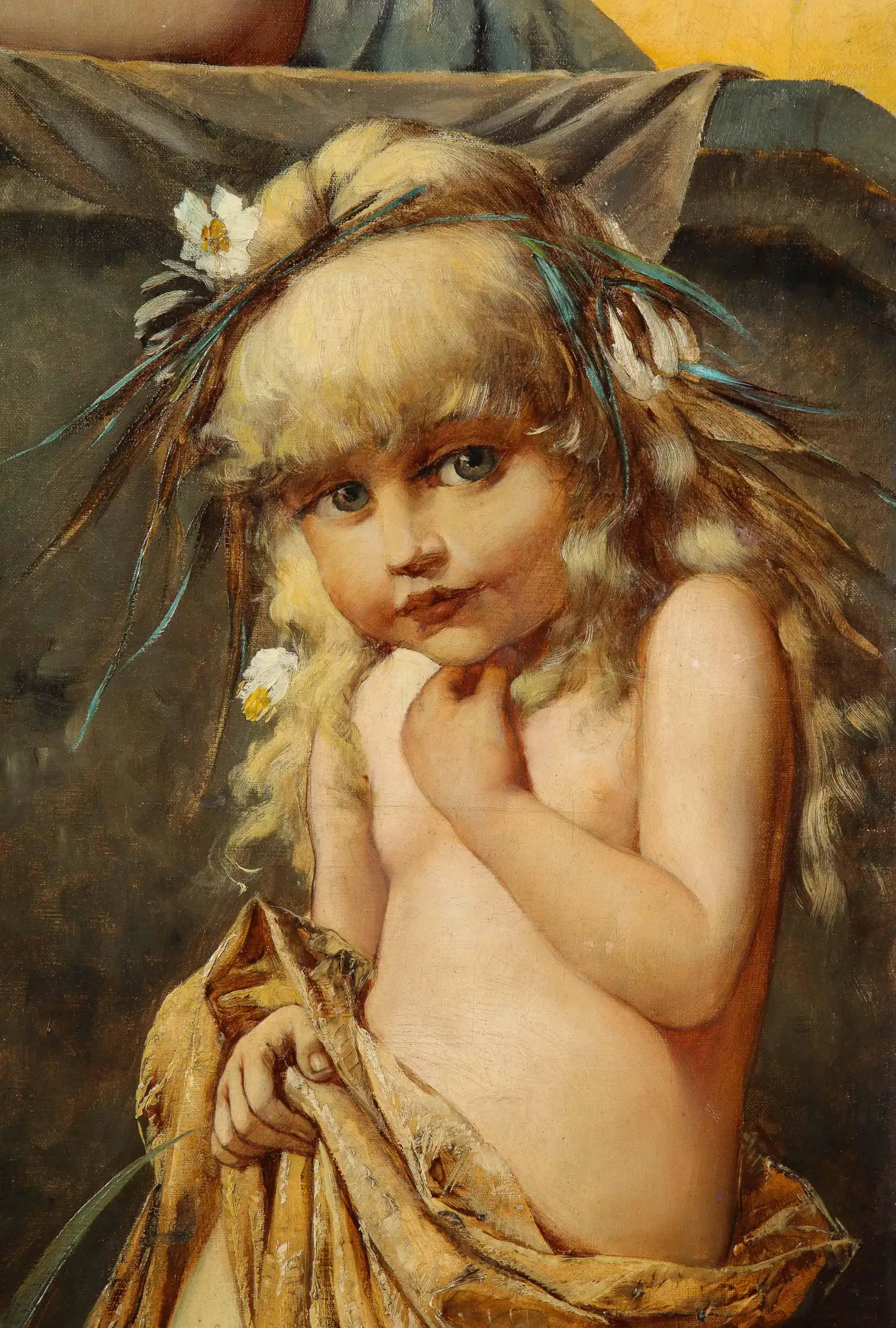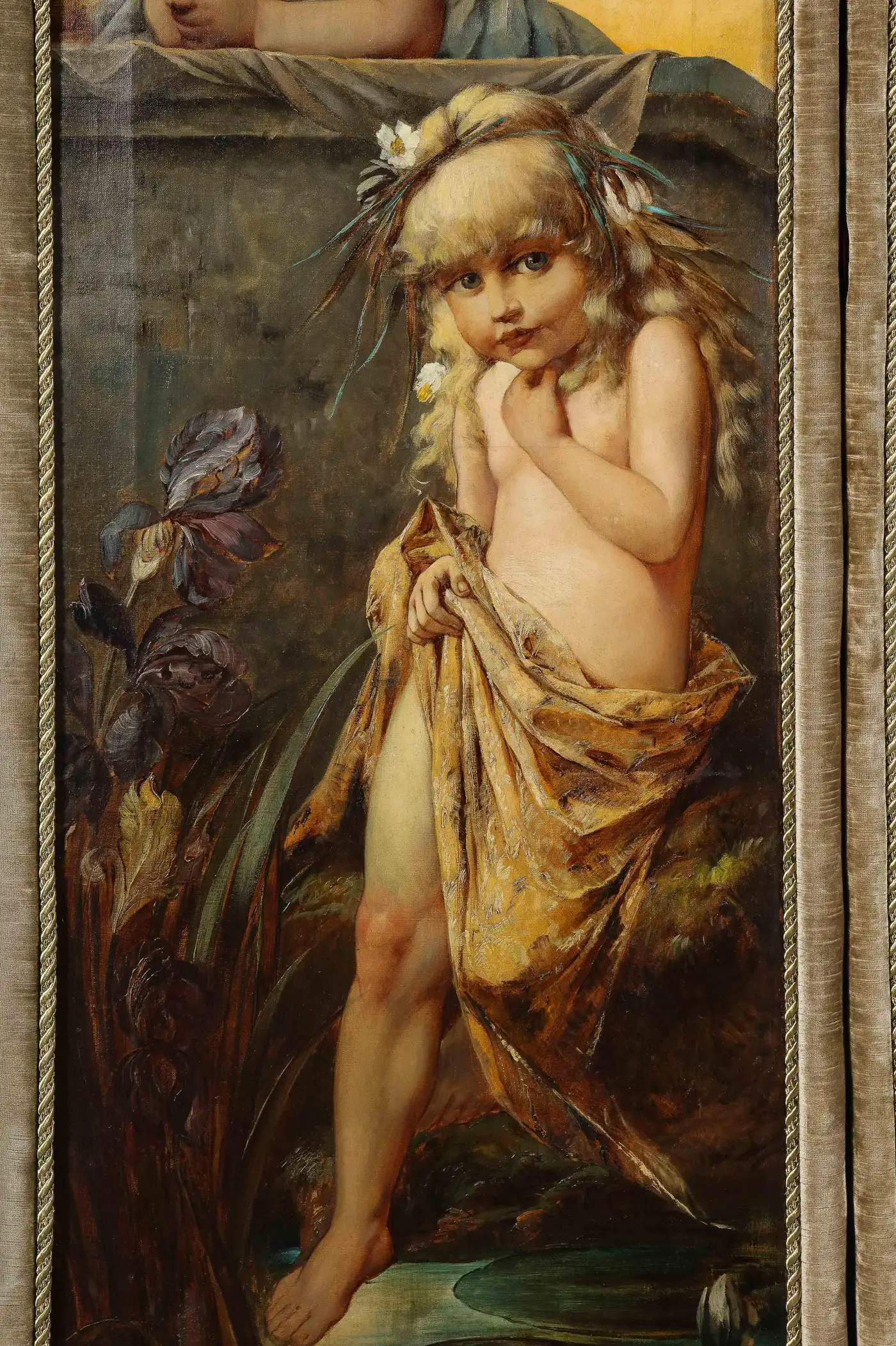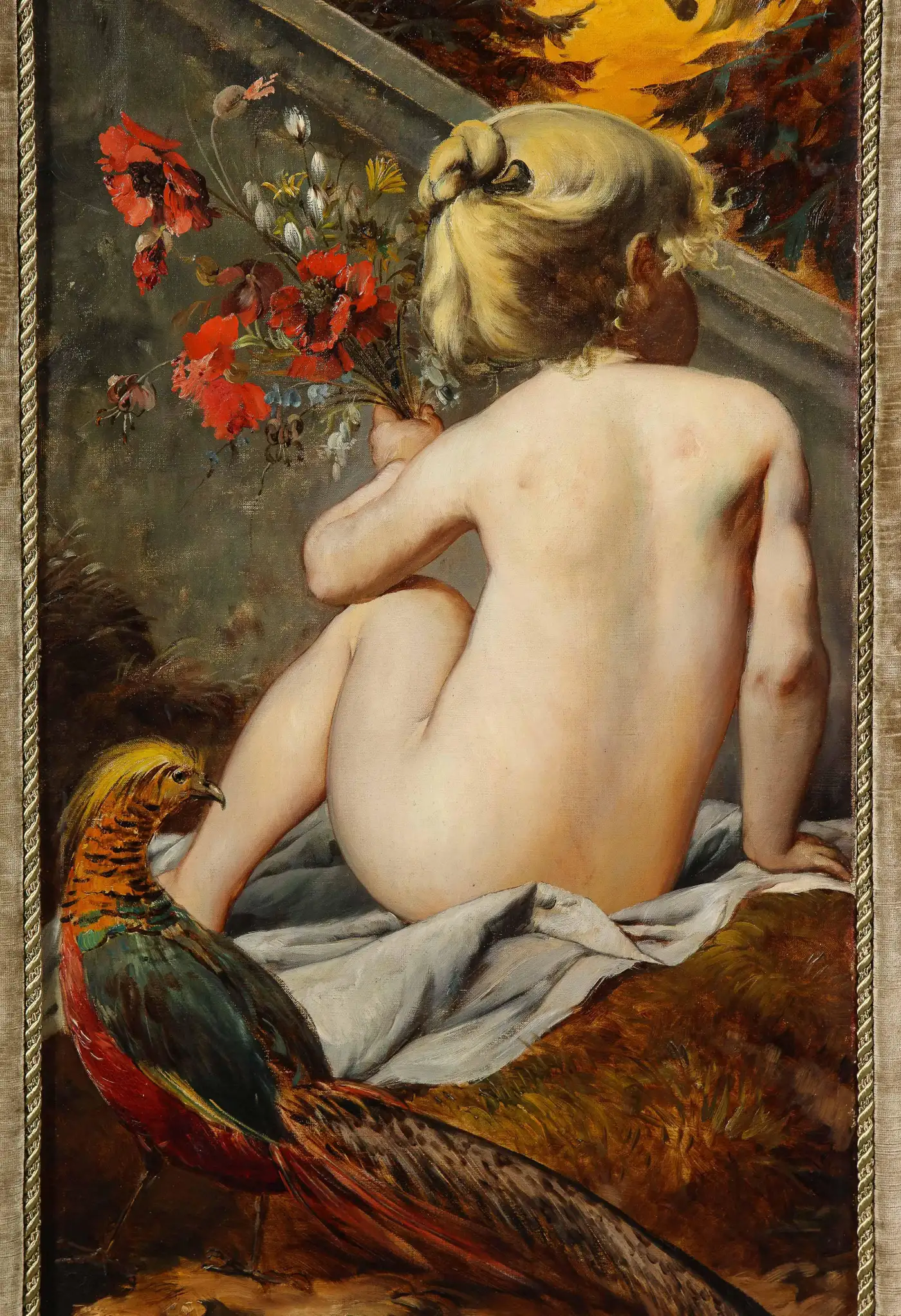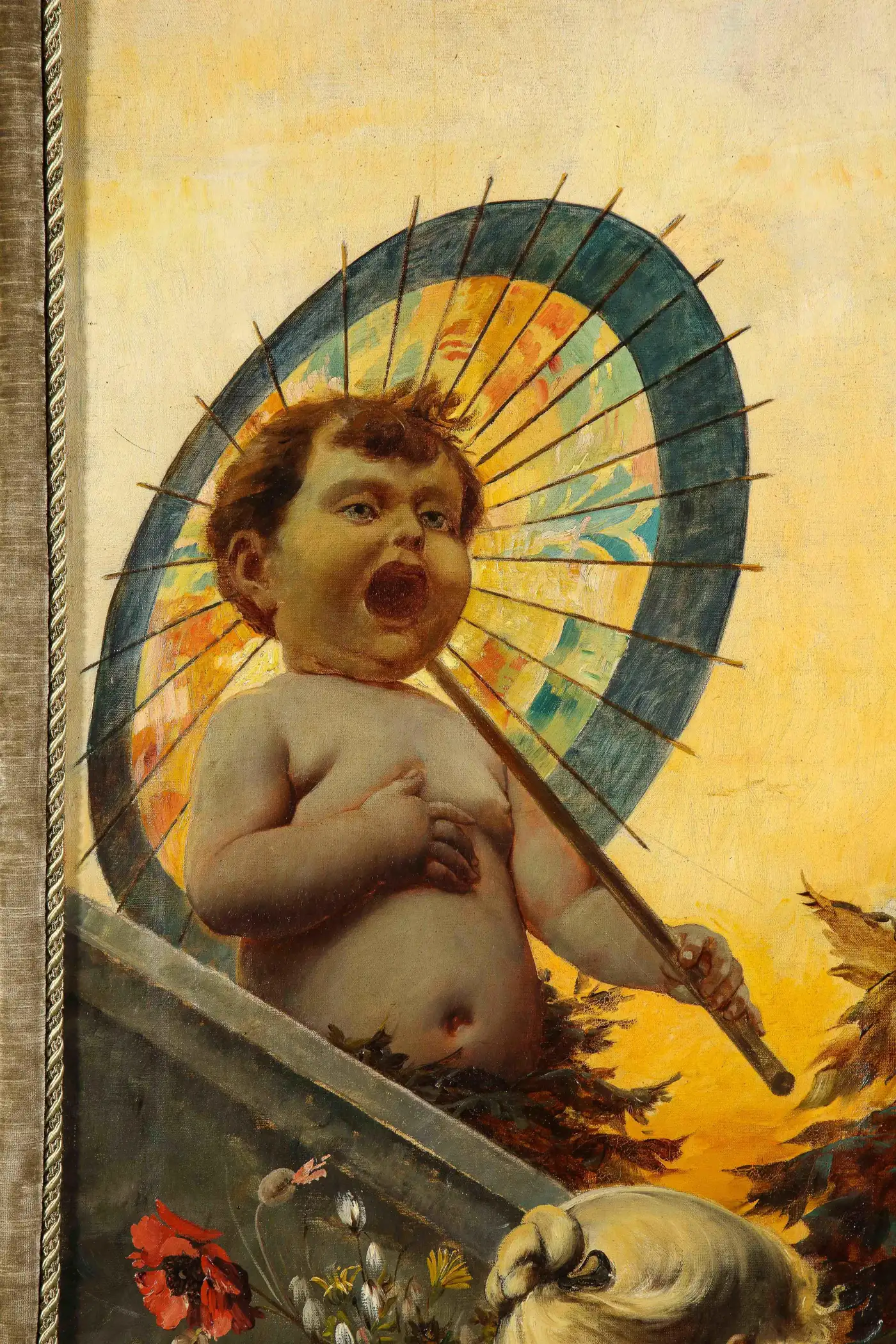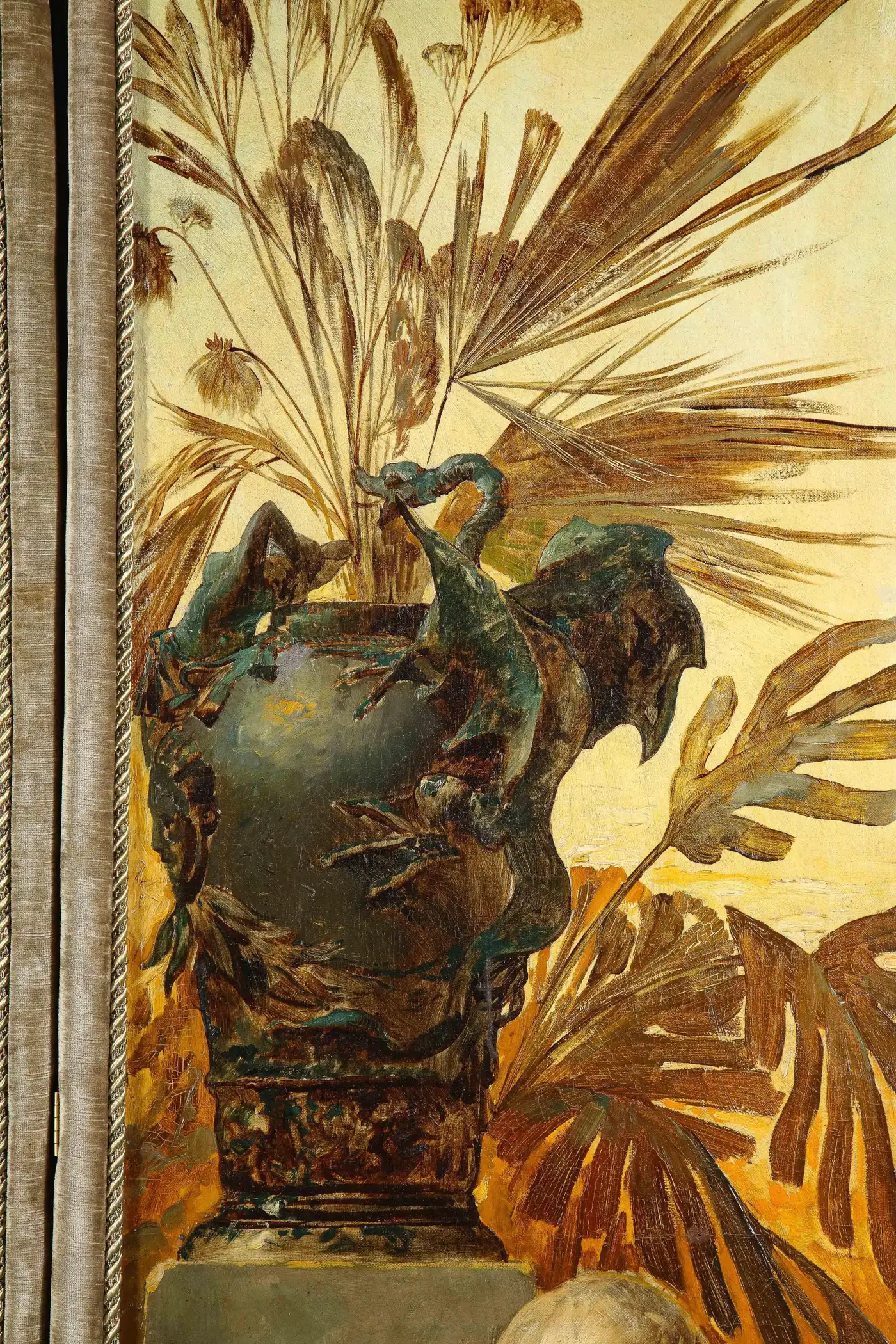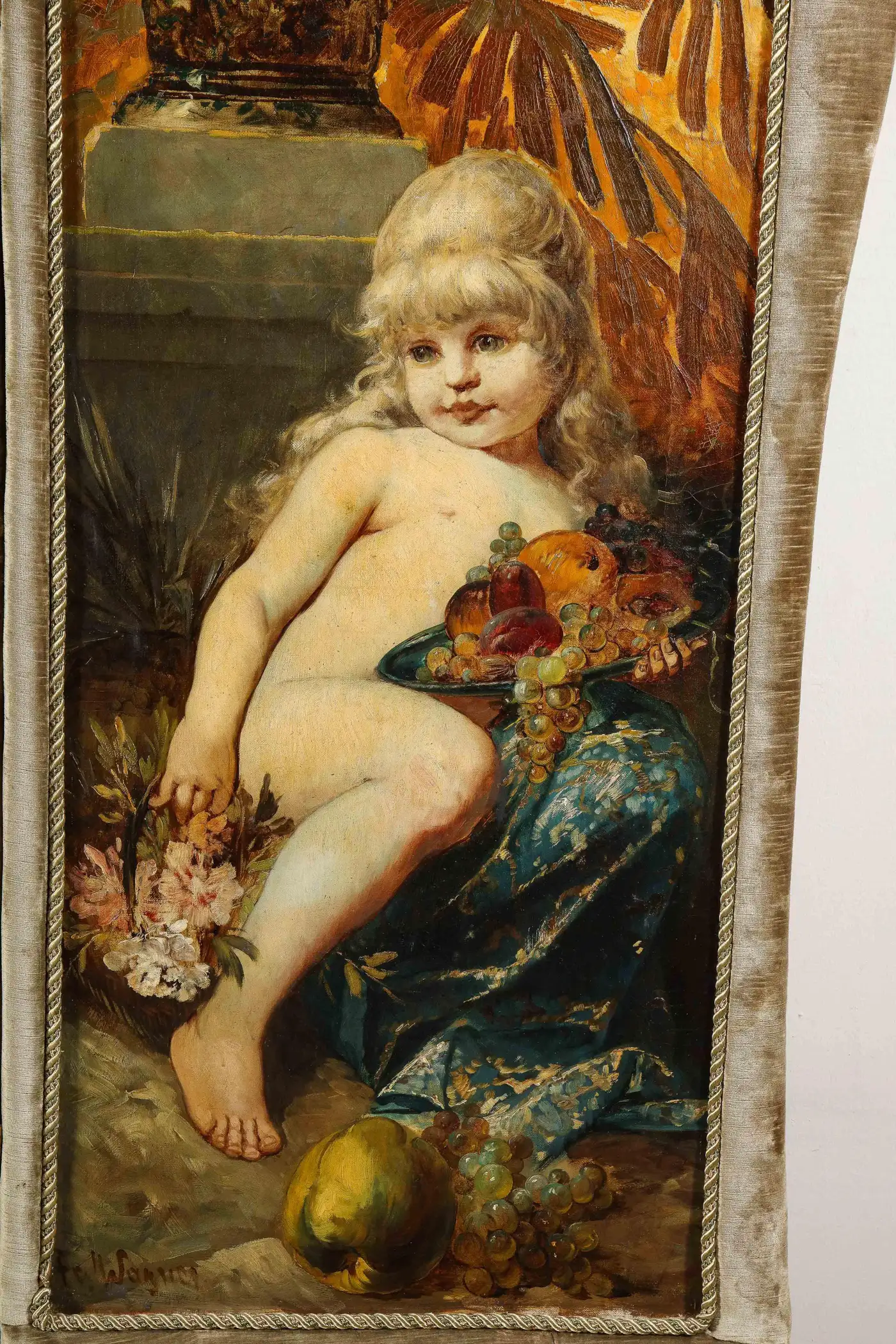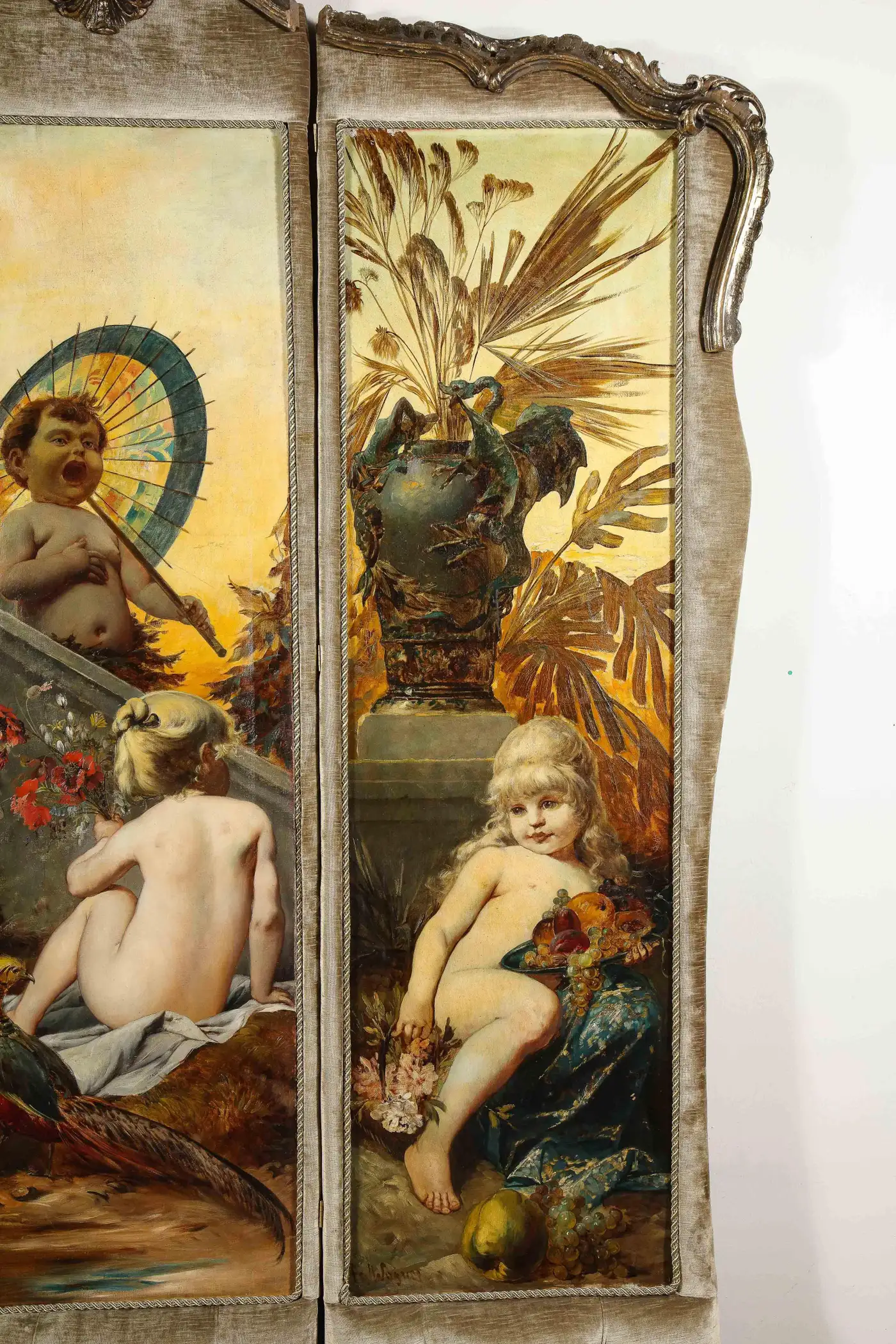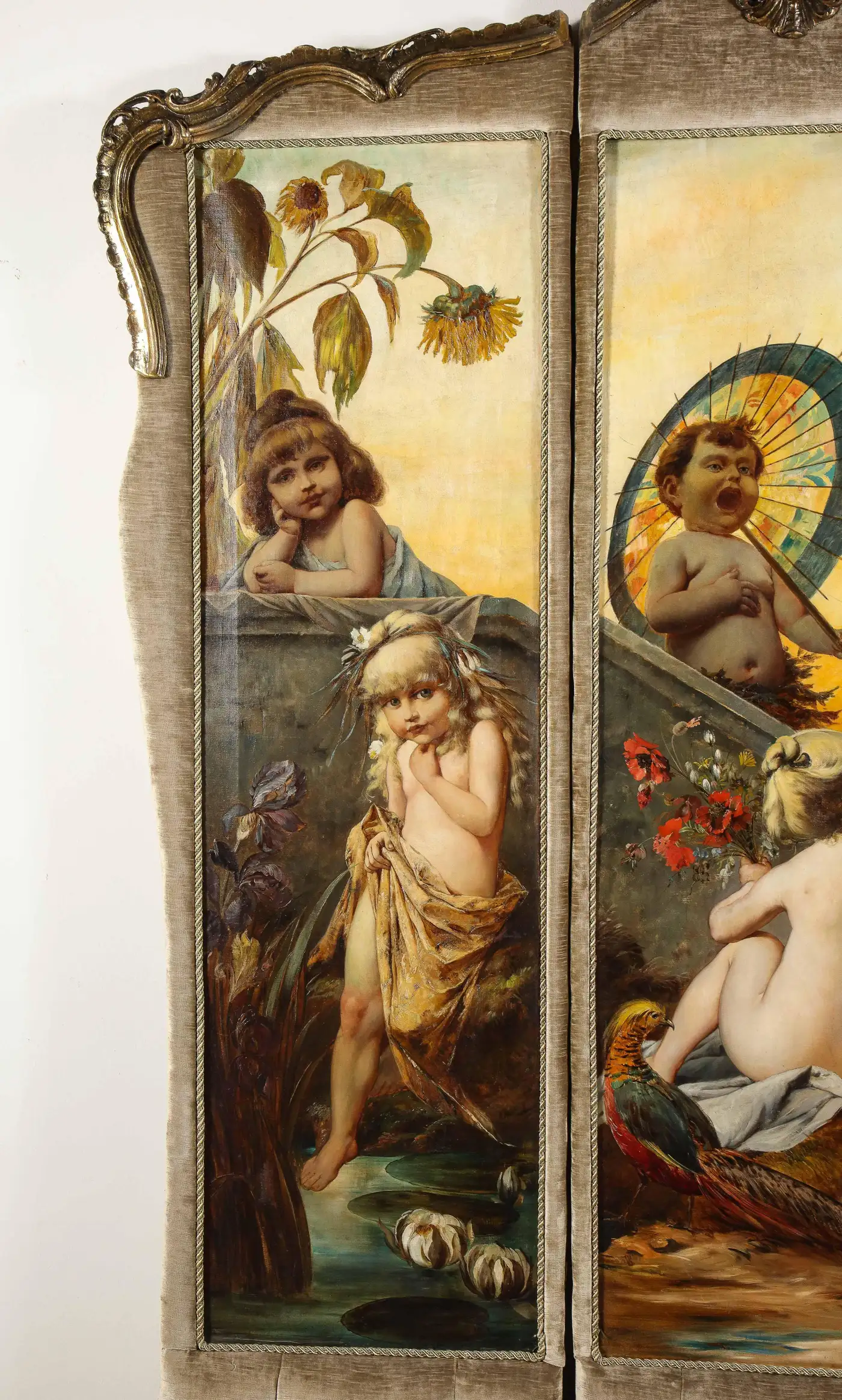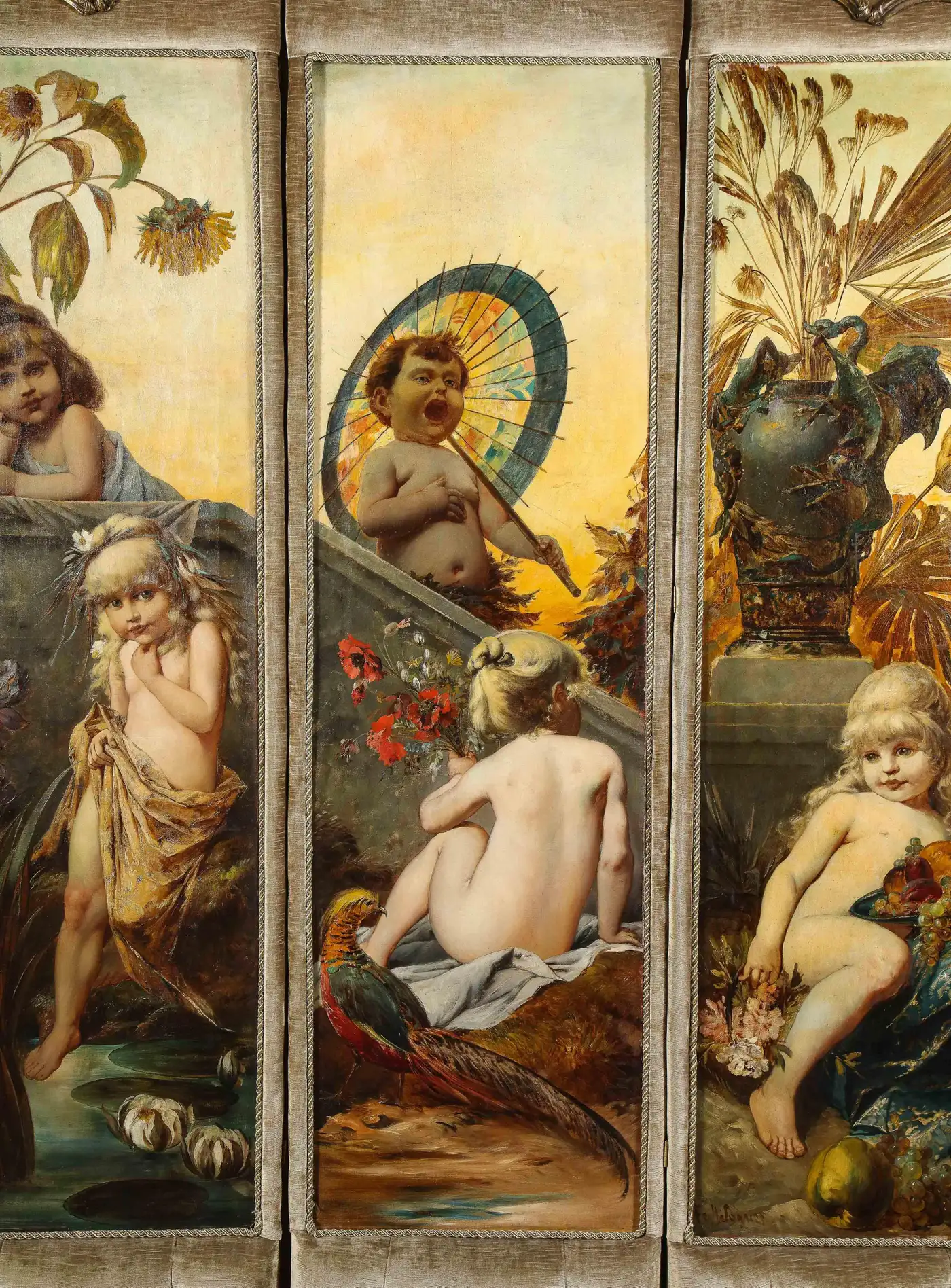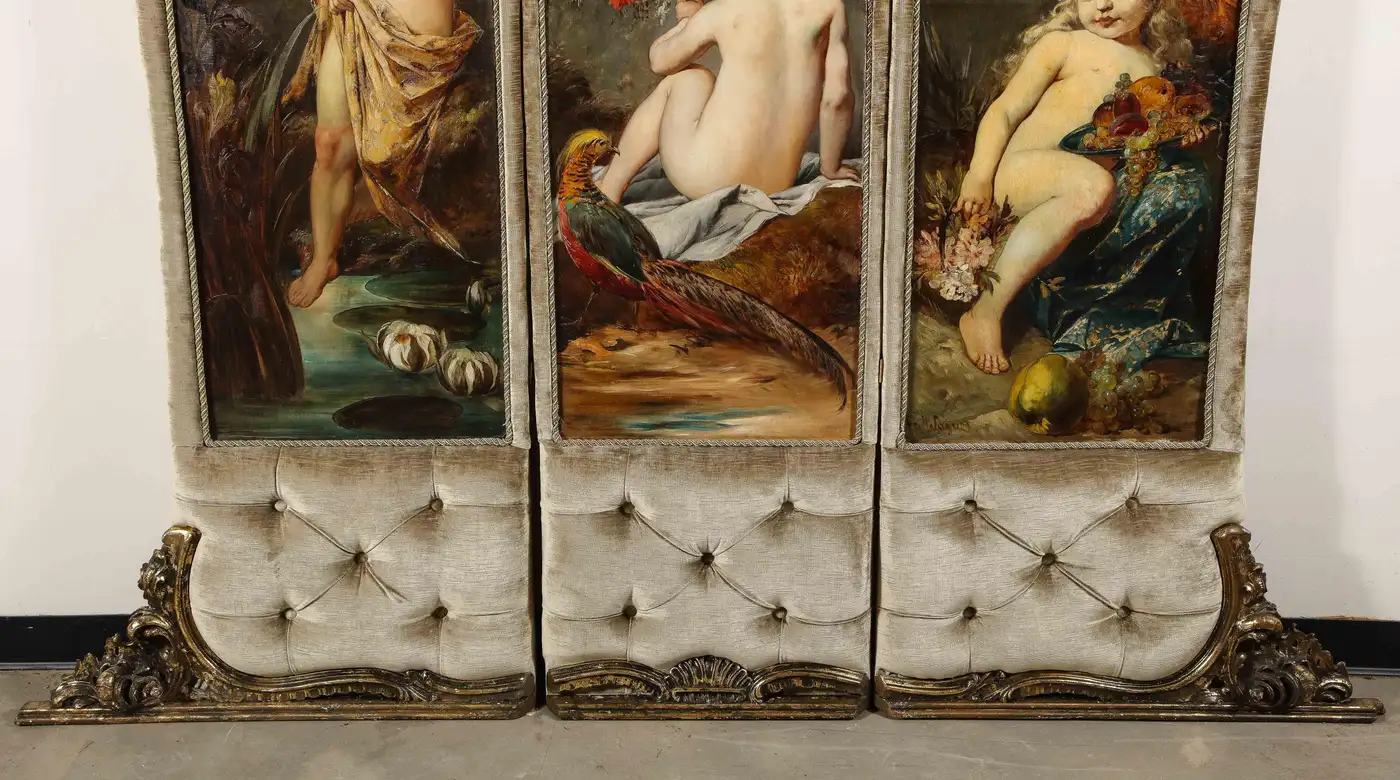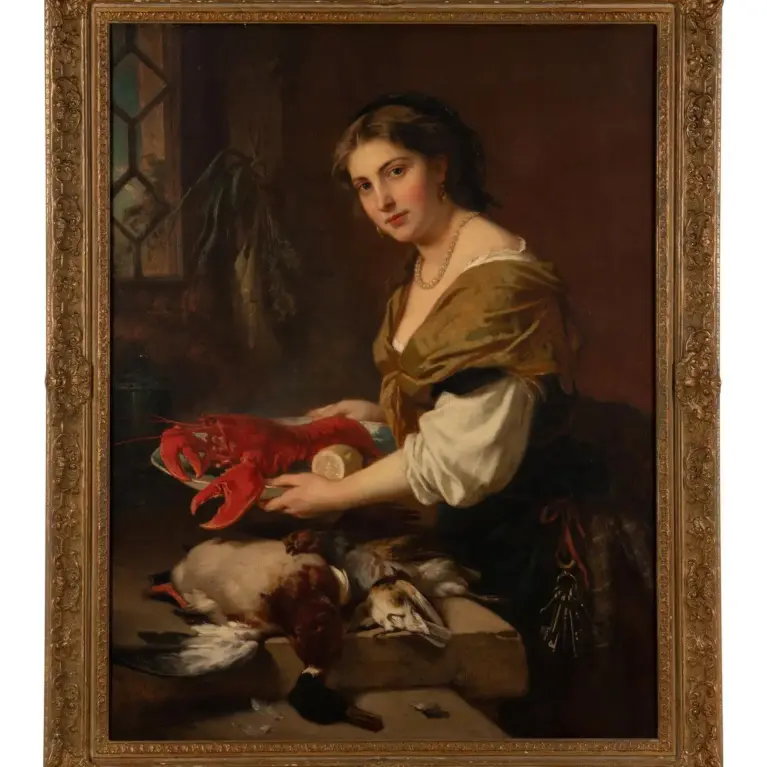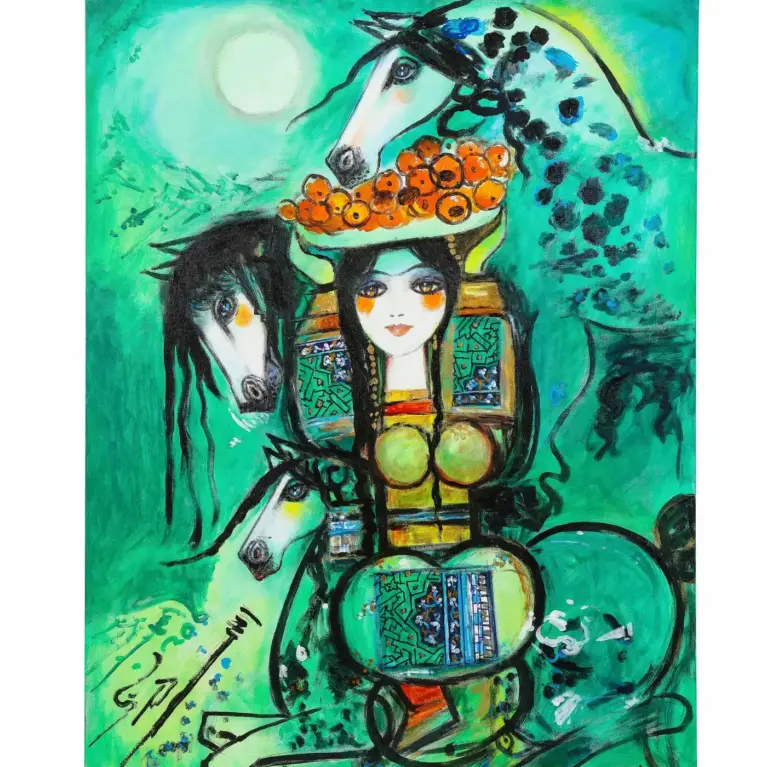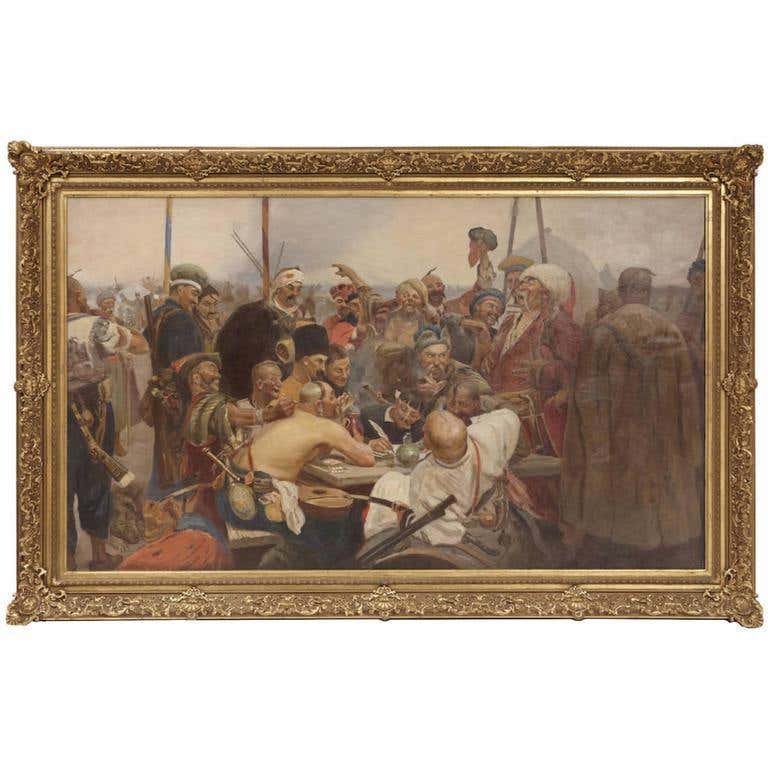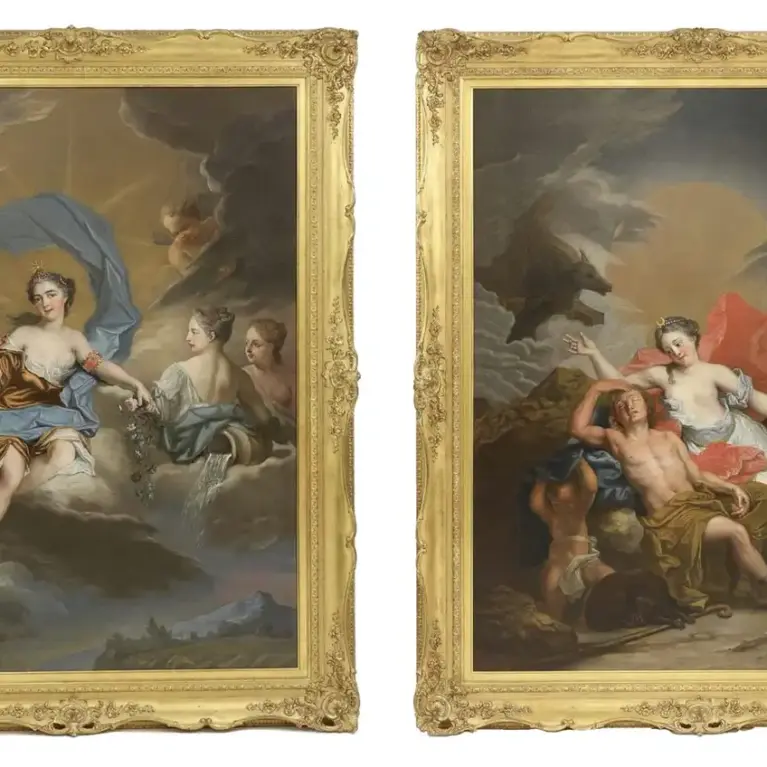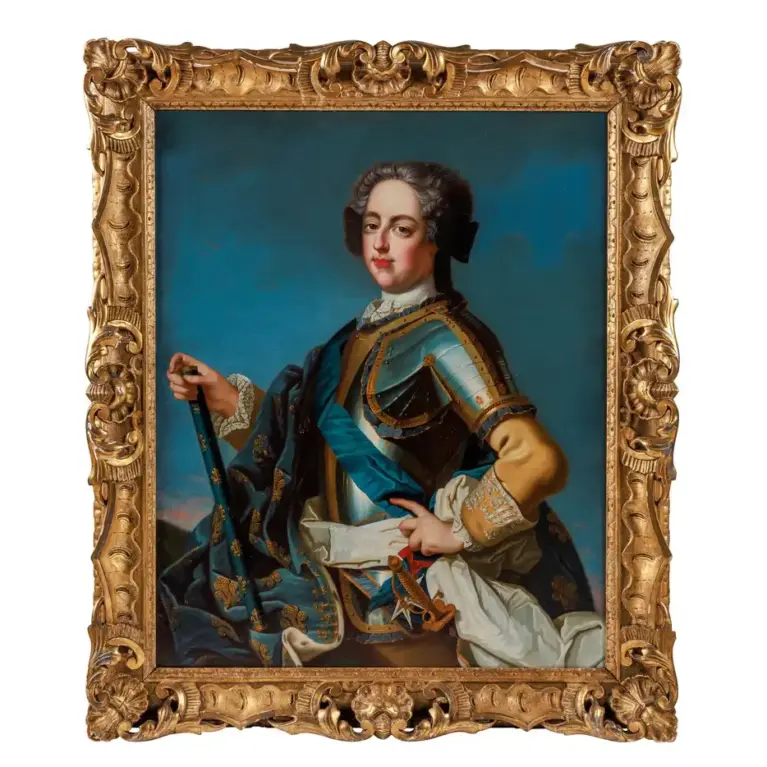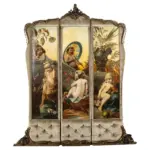Palatial and Opulent Belle Epoque Giltwood & Oil on Canvas Three-Panel Screen
- A Palatial and Opulent Belle epoque giltwood & oil on canvas three-panel screen, circa 1890.
- "Allegory of Youth"
- Comprising of three exquisite hand-painted triptych oil on canvas panels of cherubs and putti amongst a peacock, all by Ferdinand Wagner II (German, 1847-1927).
- Each panel depicting different playful and joyous scenes of putti and cherubs.
- All three-in-one panels within individually carved giltwood and upholstered frames. One panel signed at the lower left: Ferd.Wagner.
- A truly magnificent and one of a kind piece, perfect for any room in the home.
Product Details
Overall: 101″ high 85″ wide x 5″ deep
Very good condition. Ready to place
Ferdinand Wagner II (German, 1847-1927) was the son of Passau Ferdinand Wagner Senior, a teacher at a vocational art school who began training him professionally at a young age. After traveling to Italy in 1867-1868, he continued with his art studies at The Munich Academy of Arts led by Peter Von Cornelius and Julius Schnorr Von Carolsfeld. Wagner II was influenced by the Munich School of master painters and by his art teacher, Karl von Piloty, who had been teaching at the Munich Art Academy since 1856. Piloty’s approach to historical paintings was influenced by the French art academic Paul Delaroche and by the fine artworks by Rubens and the Venetians.
After his return to Germany he was commissioned to decorate the former the Tenormayer Wine Tavern in Munich, subsequently he received numerous other commissions as a decorator. Ferdinand Wagner II wall paintings and ceiling frescos attracted the attention from the Munich City Hall and he was commissioned to decorate the cellar and at the German Theatre. He also decorated the dining room at The Drachenburg in the Ko¨nigswinter on the Rhine, the Cafe´ of Roth and Luitpold in Munich and The Tivoli Restaurant in London. Between 1890 and 1891 he was comissioned numerous art works for the “Prince Bismarck” Steamboat. In Passau he created works at the town’s City Hall. Between 1892 and 1916 he worked continuously decorating the Castle Ratibor by Roth where in 1894 he painted it’s main artwork “The Triumph of Aphrodite”. Amongst other works, in 1891 he decorated the facade at The Schwyz City Hall, in 1895 the Grand Hall ceiling fresco at the Castle Bueckeburg’s, in 1897 the decoration of the large dining hall at the Famous Munich Hofbra¨uhaus and in 1899 he was commissioned to decorate the tower hall of the newly built Hamburg City Hall. In Passau, Ferdinand Wagner II was awarded numerous honors where, in 1887, he was named an Honorary Citizen, the Ferdinand-Wagner-Straße Street was named after him and the “Ferdinand Wagner Hall” at the Town’s City Hall was named after him as well.

| Period: | 19th Century |
| Origin: | Germany |
| Style: | Belle Époque (Of the Period) |
| Depth: | 5 in (12.7 cm) |
| Width: | 85 in (215.9 cm) |
| Height: | 101 in (256.54 cm) |
| Creator: | Ferdinand Wagner II 1 (Painter) |
| Date of Manufacture: | circa 1880 |
| Materials & Techniques: | Canvas, Giltwood, Paint, Upholstery |

